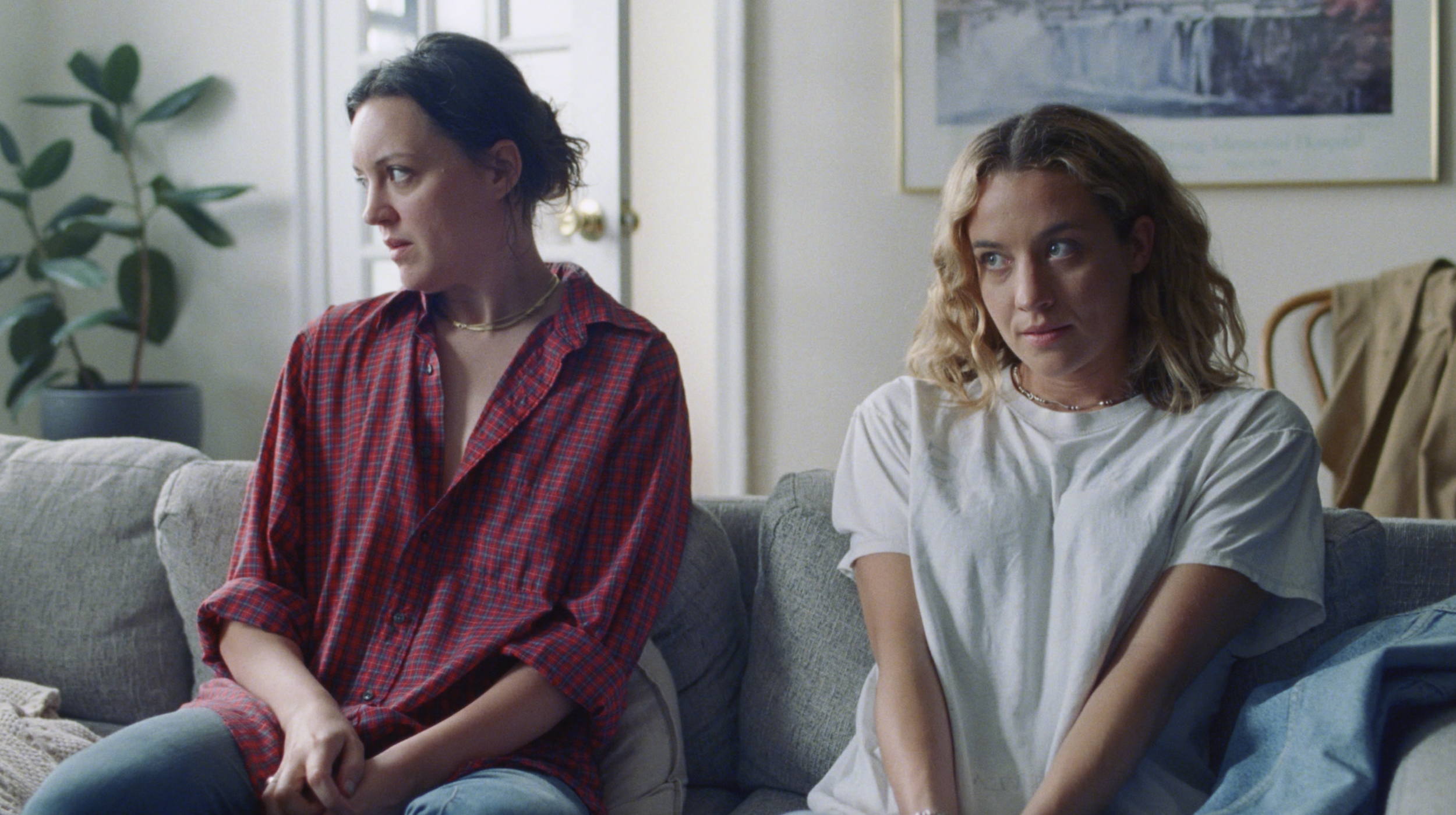How to say Goodbye
Something universal yet deeply personal
Directed by Thibaut Buccellato
words by Katie Huelin
Shot on film and unfolding entirely in real time, How to Say Goodbye, directed by Thibaut Buccellato, captures the quiet finality of love’s last moments. Born from the aftermath of his own break-up, this short follows two women sharing their final ten minutes together in the apartment they once called home.
Through stripped-back dialogue and a choreography of silences, Buccellato explores how emotion lives in stillness, in the small gestures that say what words cannot. Filming on 35mm not only shapes the film’s tactile aesthetic but heightens its sense of presence; with limited rolls and few takes, each frame becomes deliberate, alive, and unrepeatable.
Thank you for sharing How to Say Goodbye with us. It feels like a relatable portrait of heartbreak through the subtle, painful silences between two people. What drew you to capture that specific moment, the last goodbye, as the focus of your film?
After my breakup, I really wanted to write about it. My films have always been about love, breakups, and relationships in general. There’s so much to say about two people, how they meet, grow close, drift apart, and eventually separate. This moment, the very last goodbye, felt like the most fragile and honest one to explore.
You’ve said the story was born from your own breakup, which makes it feel more raw and very honest to watch. How did you navigate turning something so personal into a shared experience?
I didn’t really think about it consciously, it just happened. I felt the need to write about it, almost as a way to process what I was feeling. When a story comes from a real experience, I think people can sense it. Personal stories, especially painful ones, have a way of connecting with others because we’ve all experienced loss in some form.
The tension in the way the two characters move around each other, feels somewhat close yet detached. How did you and the actors, Eleanore Pienta and Stella Baker, work to find that emotional rhythm and portray something that felt very realistic on screen?
The entire short film unfolds in real time. We spent a lot of time blocking and rehearsing to make it feel natural. The apartment they once shared is about to stop being theirs. It’s their last moment together in that space. They talk, but mostly they communicate through looks, silences, and movement. I love working on body language and how emotion can live in silence, in small gestures, in the way someone avoids another’s eyes.
“I love that film is physical. You’re capturing something that exists in the real world.”
You shot on 35mm, which immediately gives the film a softness and weight that matches its emotional tone. Why was that format essential for you, and what does working with film bring to stories like this?
I love shooting on film, not just for its aesthetic, but for the discipline it brings. Everything feels more sacred, more intentional. Since I self-produce my short films, we don’t have many rolls, so we have to be careful. We often only did one or two takes per shot, which made everyone more focused, like performing live theater. There’s no safety net, no endless coverage. It’s about capturing this moment, here and now.
And beyond that, I love that film is physical. You’re capturing something that exists in the real world. You carry the rolls, send them to the lab, have the dailies at your place forever… They become tangible objects holding a memory. It feels honest, like I’m preserving a piece of time forever.
There’s a moment of jealousy when they realise each has started to move on, even in small ways. How did you approach showing that emotion with empathy?
I wanted to show how attached they still are, how jealousy can exist even when you know it shouldn’t. It’s not about anger, it’s about the sadness of realizing life keeps moving forward, even when part of you wants to stay behind.
Letting go doesn’t mean erasing the person or the memories. The good moments remain. They’re shared forever. Like the photo strip they look at: it represents a time that was real and meaningful.
Now, they have to move on, as painful as it is. But in the end, everything will be okay.
What's next for you?
I’m currently working on my next short film. Of course, it’s about love. I can’t say much yet, but it’s another personal story. I’m also looking for a producer for my first feature. It takes place in New York City and unfolds over 24 hours. It’s a coming-of-age story, very close to me. If you’re a producer and would like to read it, I’d love to share it.
Starring : Eleanore Pienta & Stella Baker
Written & directed by Thibaut Buccellato
Producer : Thibaut Buccellato
Co-producer : Clément Caradec
Line producer : W. Ian Ross
Director of Photography : Evan Burris Trout
Focus Puller : Peter Westervelt
Loader : Gabriel Contreras
Sound : Mark Castillo Wardrobe : Valerie Brody
Editor : Morgane Alcaraz
Sound editing & re-recording mixer : Loic Canevet (Benzene)
Colorist : Sofie Friis Borup (Company 3)
Music : Epilog
Written and performed by Shida Shahabi
Licensed courtesy of Fatcat records
Published by Redbird Music
Shot on 35mm Kodak Film
Developping by : Metropolis Post
Camera provided by : TCS Editing studio : Mc Murphy
Color grading studio : Company 3
Sound mix studio : Benzene --
The director wishes to thank : Madia Hill Scott, Valerie Brody, Clément Caradec, W. Ian Ross, Mika Altskan, Emily Kordovich, Spencer Staats, Mitch Mason, Catherine Barnes, Emily Herrmann, Shida Shahabi, Jenna Van Uden, Tim Husom, Dave Howell, Hassan Rodriguez, Katya Mokolo, Sacha Freeman, Alice Duchêne, Sébastien Gros, Thomas Papille, Killian Adams, Zoé Sassier, Amélie Heaume, Clémentine Colombani, Tracy Ngyen, Gregg Dallesandro, Julia Oberlinkels --






